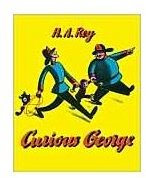Using Curious George Literacy Activities in the Primary School Classroom
Page content
Reading Activities
You can do several reading activities as part of Curious George literacy activities in your primary school classroom. Here are a few ideas:
- Use a Venn diagram to compare and contrast two different Curious George books. For young children in preschool or kindergarten, you can draw a Venn diagram on chart paper and fill it out as a shared writing activity. For other primary school grades, students can fill out their own Venn diagrams or in small groups compare two Curious George stories.
- Role play different Curious George plots. Comprehension skills can be improved with role playing. You can read the story aloud while your students act it out, or you can do a bit of reader’s theatre by creating a script with different parts for older primary grades. When students are finished role playing, ask them to write about their experiences or to discuss them and highlight any new revelations they had about the characters or the stories.
- Read several different Curious George books to your students. In these Curious George literacy activities, ask students to pick their favorite book. They should create a poster about their favorite book and why it is their favorite. Students will also present their choices in a short speech in front of their classmates.
Writing Activities
You can do several writing activities as part of the Curious George literacy activities in your primary school classroom. Here are a few ideas:
- As a class, write your own Curious George adventure. You can write it together in a shared writing session, and then students can each illustrate their own page. Bind the pages together and create a book.
- In reading response journals, ask students to write a character description of the Man with the Yellow Hat and Curious George. Then ask them to write why they believe these two characters are a good match. For students in younger primary grades, they can work in pairs or small groups on this assignment.
- Writing about personal connections is important for students’ comprehension and to improve writing skills. Depending on which Curious George book you read, ask students to make a personal connection with the book. For example, if you read the Curious George book about the zoo, ask students to write about a time they went to the zoo or what they would like to see or do if they went to the zoo. If you are reading the book about Curious George getting a job, then ask students to write about what they want to be when they grow up or about their parents’ jobs. Curious George literacy activities should help students relate to literature on their level.
Students love Curious George, and these books bring many opportunities to meet curriculum goals and objectives in a primary school classroom.
This post is part of the series: Curious George in the Classroom
This series of articles gives you ideas and lesson plans to use when reading Curious George books in your elementary classroom.
